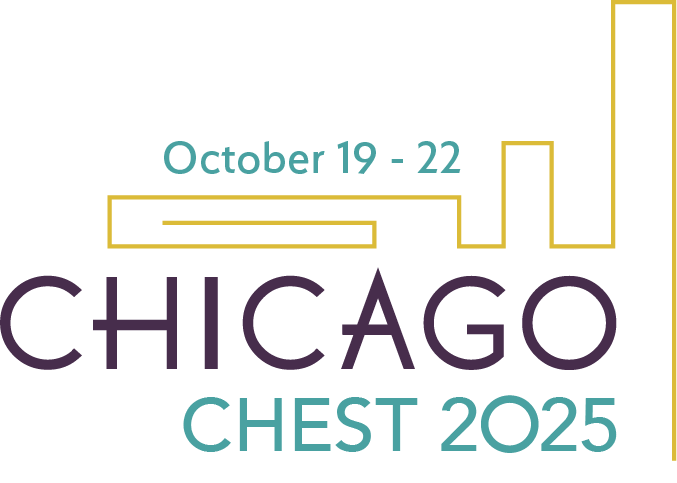Since the US Food and Drug Administration approved sotatercept for the treatment of pulmonary arterial hypertension (PAH) in March 2024, clinicians have navigated questions about how to incorporate the activin-signaling inhibitor into the current treatment paradigm. During the CHEST 2025 session Treatment of PAH in the Age of Sotatercept on Monday, October 20, in Chicago, experts discussed recent data and practical management strategies for sotatercept in patients with PAH, as well as ongoing trials elsewhere in the field of PAH.
Sotatercept data in PAH

Zeenat Safdar, MD, FCCP, reviewed the clinical trial evidence regarding sotatercept’s use in PAH. Sotatercept was approved for PAH based on evidence from the pivotal phase 3 Study of Sotatercept for the Treatment of Pulmonary Arterial Hypertension (MK-7962-003/A011-11) (STELLAR) trial, which demonstrated that sotatercept improved 6–minute walk distance by approximately 40 meters compared with placebo and delayed time to first occurrence of death or nonfatal clinical worsening.
Dr. Safdar, Director of the Houston Methodist Lung Center, was an investigator on STELLAR, as well as the phase 2 Study of Sotatercept for the Treatment of Pulmonary Arterial Hypertension (PAH) (PULSAR) trial and the ongoing Long-term Follow-up Study of Sotatercept for PAH Treatment (MK-7962-004/A011-12) (SOTERIA) trial. She discussed an interim analysis of SOTERIA, which included adults with PAH who had previously completed a prior sotatercept study.
“Six-minute walk [distance] in those patients who were on placebo and then crossed over to the active drug improved a little. If they were continued on sotatercept from the get-go, their walk remained stable,” Dr. Safdar said.
SOTERIA interim results support the long-term durability of clinical benefits and manageable safety of sotatercept for the treatment of PAH, she said. Sotatercept is now part of the treatment algorithm for PAH in patients who are intermediate-low risk, intermediate-high risk, high risk, or assessed as persistent intermediate-high or high risk after initial therapy and follow-up assessments.
Sotatercept strategies, side effects

Christopher S. King, MD, FCCP, Associate Medical Director of the Advanced Lung Disease and Transplant Program at Inova Schar Heart and Vascular, described considerations for prescribing sotatercept and managing side effects.
Laboratory monitoring is required before initiating sotatercept, and hemoglobin and platelets should be checked for acceptable values, Dr. King noted. Sotatercept cannot be used during pregnancy.
Based on the available safety data, sotatercept is considered a safe medication that is well-tolerated, he said. There are some notable anticipated side effects, including elevated hemoglobin, bleeding events, and telangiectasias. There are also some rare side effects, including pericardial effusion and hypoxemia.
“Elevated hemoglobin is probably the thing that we see most commonly in our clinic. The reports from different clinics seem to be variable,” Dr. King said. “Again, you need to check for hemoglobin and platelets before each dose for the first five doses and then again in some sort of interval after that. I do it about every three months for my patient population.”
On the horizon in PAH

Sonja Bartolome, MD, FCCP, Professor of Medicine at UT Southwestern Medical Center, summarized findings from ongoing clinical trials in PAH that are closest to completion.
Seralutinib is an inhaled tyrosine kinase inhibitor that was first studied in the phase 2 GB002 in Adult Subjects With Pulmonary Arterial Hypertension (PAH) (TORREY) trial. The trial met its primary end point with a 14.3% reduction in pulmonary vascular resistance (PVR) at 24 weeks in patients treated with seralutinib. Seralutinib is now being studied in the phase 3 Efficacy and Safety of Seralutinib in Adult Subjects With PAH (PROSERA) study, and results are expected in early 2026.
Ralinepag is an oral, selective prostacyclin receptor agonist that showed a significant decrease in PVR in a phase 2 trial. Ralinepag is now being studied in the phase 3 Study Evaluating the Efficacy and Safety of Ralinepag to Improve Treatment Outcomes in PAH Patients (ADVANCE OUTCOMES) trial, and results are expected in early 2026.
Frespaciguat is an inhaled soluble guanylate cyclase stimulator that was studied in the phase 2 Study of the Efficacy and Safety of Frespaciguat (MK-5475) in Participants With Pulmonary Arterial Hypertension (INSIGNIA-PAH) study. Treatment with 100 µg and 380 μg of inhaled frespaciguat significantly reduced PVR.
Finally, treprostinil palmitil inhalation powder was studied in a phase 2b study, which met its primary end point with a 35% reduction in PVR.
“New treatments are going to have to show benefit over what we’re already using and combination therapy in general,” Dr. Bartolome said. “In the future, precision medicine will likely help us choose the right treatment for the right patient.”

Call for Topics Is Open
Feeling inspired by all the great sessions in Chicago? Help shape the curriculum for CHEST 2026, October 18 to 21 in Phoenix, by submitting topic ideas from areas you’re passionate about, topics affecting your practice, or new technologies you’d like to learn more about. The submission deadline is Tuesday, December 2, at 2 pm CT.


